Known for its cornfields and rolling hills, Iowa is often overlooked by campers planning cross-country road trips. However, this underrated destination is up to its ears with unexpected surprises. From caves and state parks to historic towns and quirky roadside oddities, the Hawkeye State offers something for adventurists, historians, and culture-seekers alike. While exploring the heartland of America, follow the ribbons of highway to the Midwest’s unsung cream of the crop.
Shrine of the Grotto of the Redemption
The iconic line, “If you build it, they will come” — from the 1989 movie, “Field of Dreams,” set in Iowa —certainly holds true for this Hawkeye State gem. For those who appreciate artistry, prepare to be blown away by this otherworldly treasure tucked away in West Bend. The shrine, spanning an entire city block, contains the largest collection of minerals in any one place on Earth. Every square inch is bedazzled with crystals, fossils, stalactites, gems, shells and petrified wood. The largest man-made grotto in the world was created by German immigrant, Father Paul Matthias Dobberstein. After arriving in the states at age 20, he studied for priesthood at the seminary of St. Francis near Milwaukee and was ordained in 1897.

Photo: Cate Battles
Soon afterward, he became critically ill with pneumonia and prayed for heavenly intervention, vowing to build a shrine if his prayers were answered. Luckily, the young seminarian survived, and after being appointed priest at Sts Peter and Paul Catholic Church in West Bend, he began constructing the shrine in 1912. He had spent a decade gathering rocks, fossils, and precious stones, including a stalagmite weighing over a ton from Carlsbad Caverns. Construction was completed 90 years later, after the father’s death, with the help of collaborators. Today, the shrine is a conglomeration of nine grottos depicting scenes in the life, death, and resurrection of Jesus.
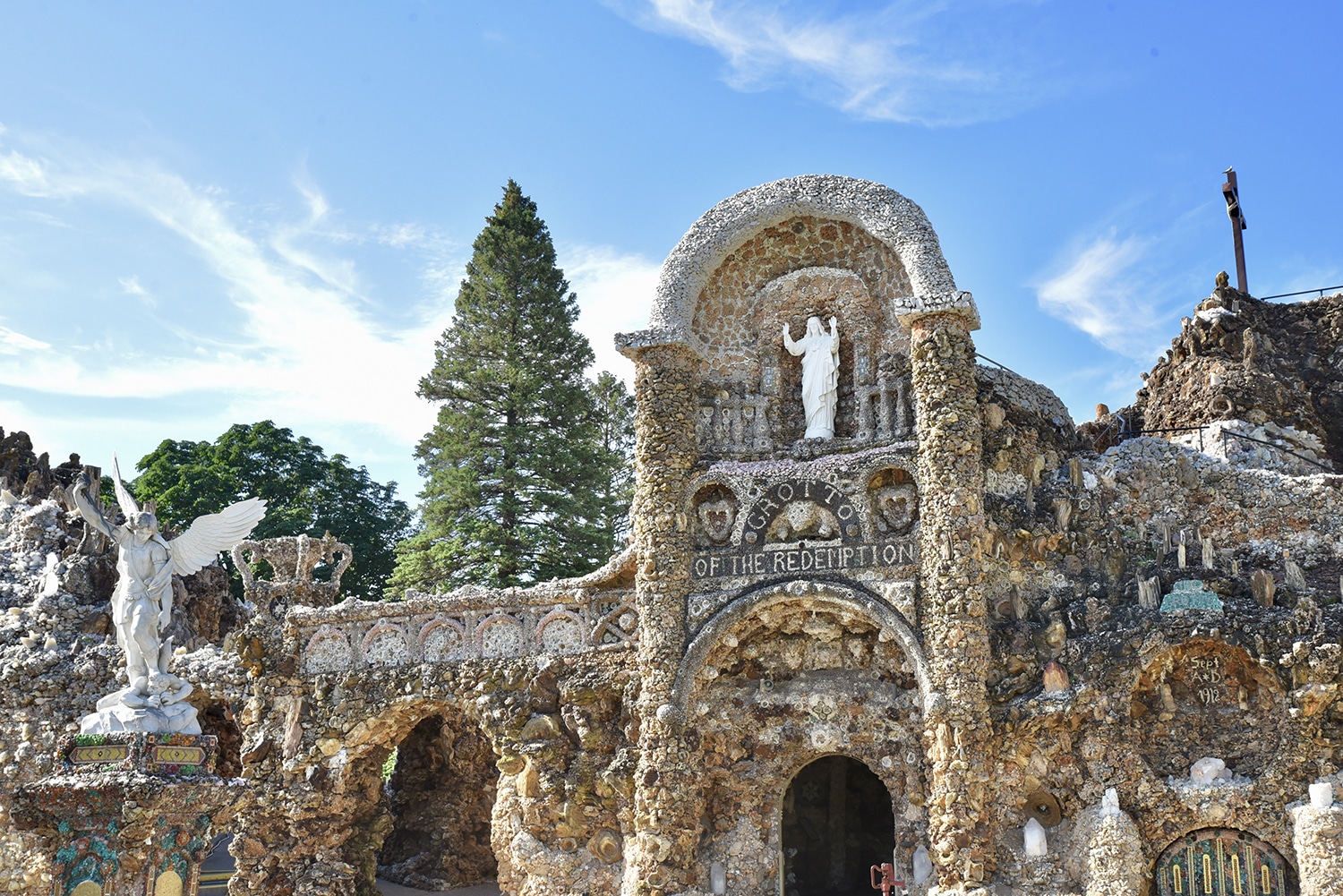
Photo: Cate Battles
No matter if you’re Catholic or just a rock hound, wandering around the shrine is a religious experience. While there, make sure to visit the museum, gift shop, and tour the adjacent St. Peter and St. Paul Catholic Church, where visitors can see the impressive Christmas Chapel, created with rocks and minerals deemed too delicate to withstand the weather. In keeping with Father Dobberstein’s wishes, the grotto is open and free to the public 7 days a week/24 hours a day. Pets are welcome to walk around the grotto but not inside buildings. Donations are appreciated.
Pella Tulips

Photo: Cate Battles
Whether you’re walking by colorful tulip beds, gazing at the tallest working windmill in North America, devouring Dutch letters, or strolling along downtown canals, you’ll think you’ve teleported to the Old Country. Founded by Dutch immigrants escaping religious persecution, the town of Pella was established in 1847. From historic architecture to Dutch food and annual festivals, Pella is truly the Netherlands of the Midwest. Just don’t expect to find a Red Light District here; this wholesome town is Grandma-approved.
During your stay, visit Franklin Street’s Vermeer Windmill, the tallest working grain windmill in the U.S., where you can learn about its history and climb up to the observation deck overlooking the town. While there, explore the Historic Village, a collection of 22 period buildings including the Opera House and Wyatt Earp’s boyhood home. Here, you’ll also find the Klokkenspel, a 147-bell carillon that puts on a show about Pella’s history throughout the day. Drop by Jaarsma or Wander Ploeg Bakeries for traditional sweet and savory treats and stroll along the canals. Spend an afternoon on Lake Red Rock, Iowa’s largest lake, or visit one of their 15 public parks. While Pella is a wonderful place to visit any time of the year, spring’s Tulip Time Festival and winter’s Kerstmarkt are especially great times to travel.
Find a waterfront campsite at Howell Station Campground at Lake Red Rock.
Maquoketa Caves State Park
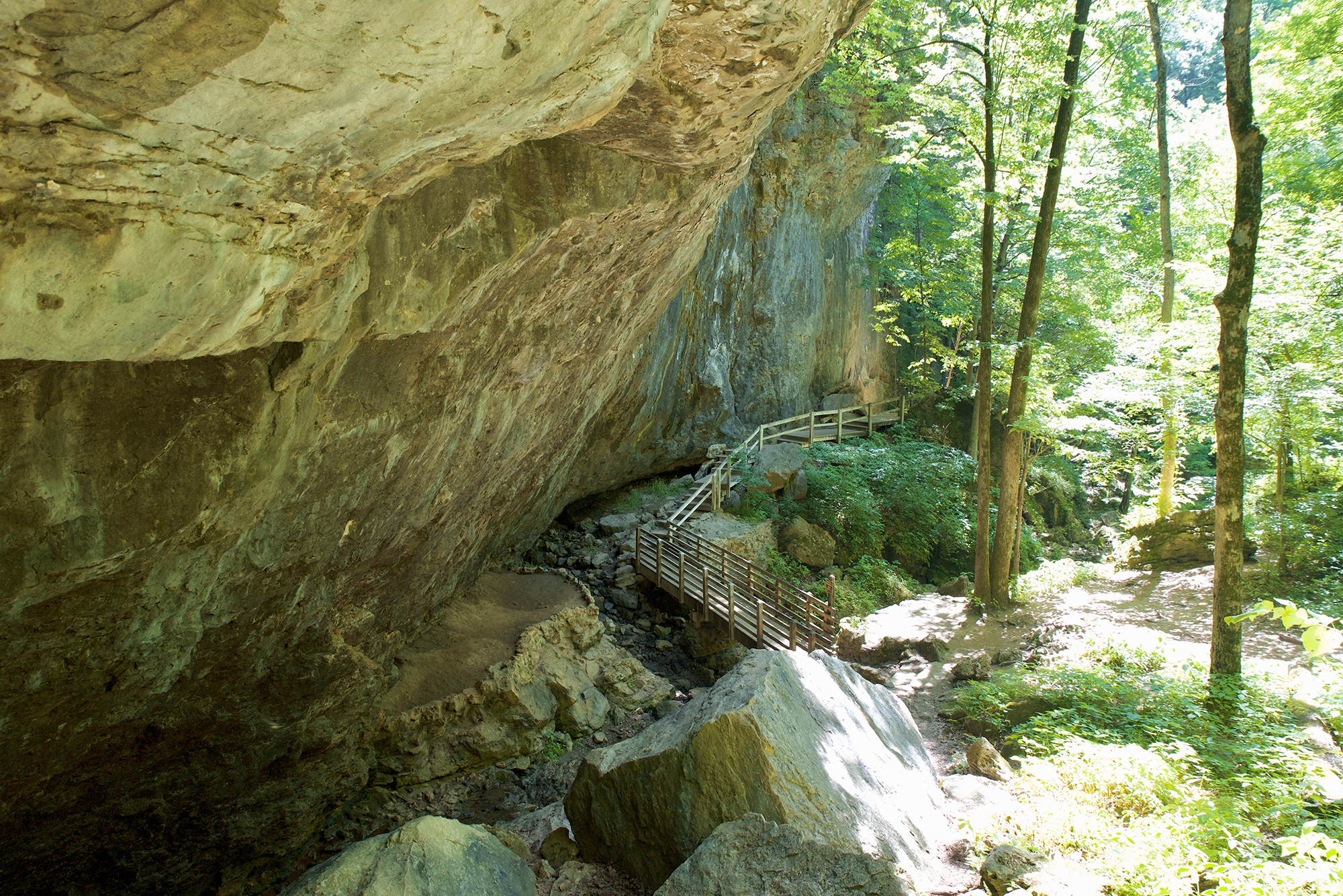
Photo: Cate Battles
Explore one of Iowa’s most unique natural attractions, which also is one of its oldest state parks. Since the 1830s, hikers have been drawn to the Maquoketa Caves State Park’s 16 subterranean chambers, towering bluffs and beautiful forest setting. Long before settlers discovered the underground world of Maquoketa, evidence of ancient native settlements have been found during archeological digs in and around the caves that skirt Raccoon Creek. Inside the Ice Cave, the coldest of the caves, scientists discovered stone tools, arrows and bone and ceramic fragments, signaling the presence of earlier people dating back hundreds if not thousands of years.
Originally known as Moorehead Caves or Burt’s Cave, the once privately owned attraction was a popular locale for exploration, picnics, and parties during the mid to late 1800s. Dances were held in the 1,100-foot-long Dancehall Cave, the largest of the caves, which attracted rowdy crowds. Unfortunately, this era also predated regulations and environmental protections, allowing trophy hunters to rob the caves of ancient stalagmites and stalactites. In order to stop the degradation of the caves, efforts by the local women’s club and the Civilian Conservation Corps led to Maquoketa becoming one of the first state parks in Iowa during the 1920s. Since its preservation, the park has expanded in size and amenities, adding campgrounds, picnic areas and an interpretive center.
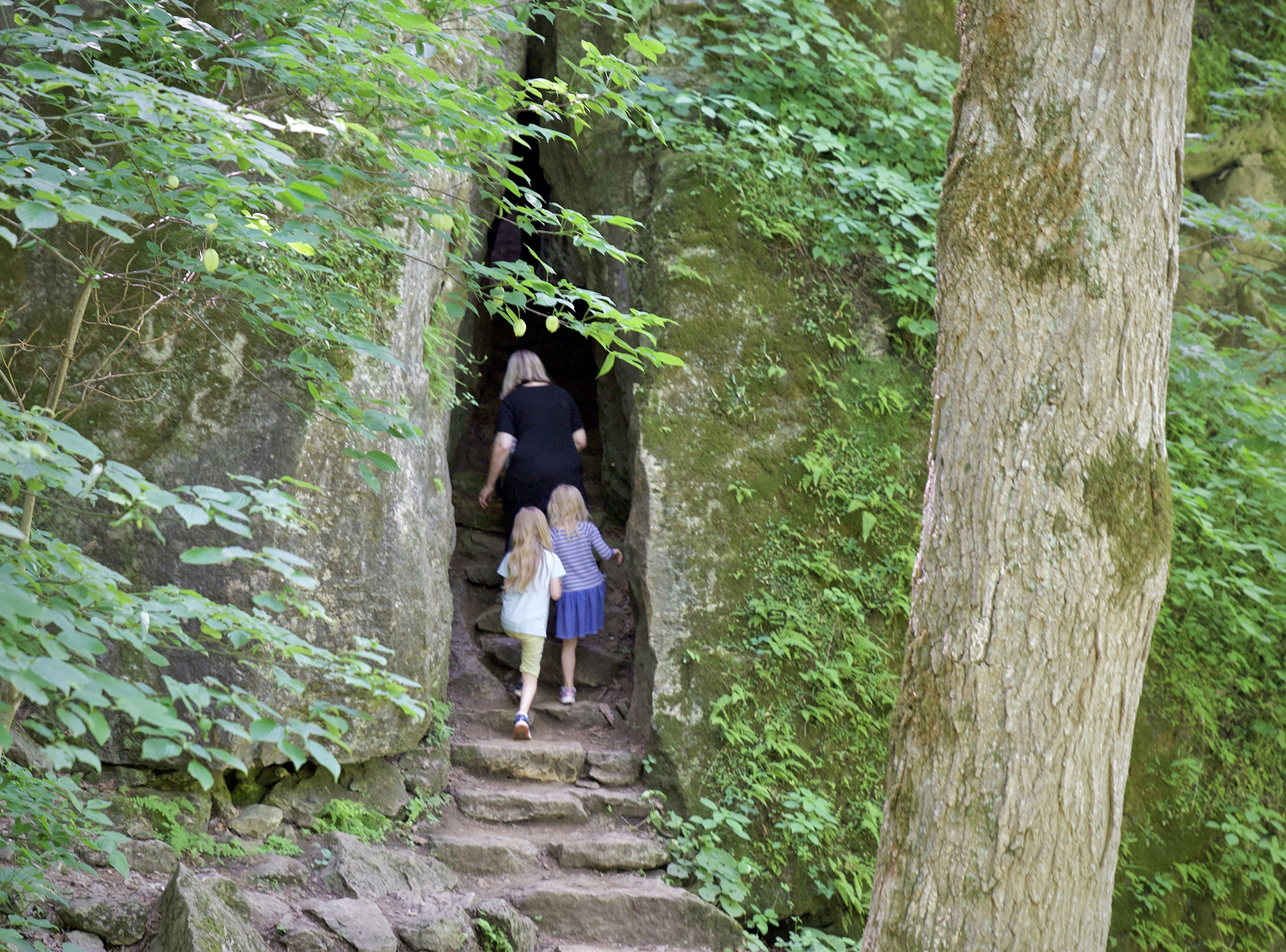
Photo: Cate Battles
What makes Maquoketa extra special is the fact that it has more caves than any other park in Iowa, largely due to its unique geology. Known as the Driftless Area, the four corners of Iowa, Wisconsin, Minnesota and Illinois escaped the glaciers of the last Ice Age, unlike the rest of the Midwest. As the glaciers advanced, retreated and “drifted” over the last 2.5 million years, they missed this narrow region, sparing it from glaciated scours, debris and flattening, leaving it the scenic landscape it is today. Here, you’ll find deep valleys, towering bluffs, underwater springs and networks of caves. At Maquoketa State Park, rainwater picking up tiny amounts of carbonic acid from decaying leaves seeped through cracks and fractures within the limestone bedrock. Over time, it slowly dissolved the rock, allowing the cracks to grow larger and larger as more acidic water entered the voids that eventually created caves. Many park features are remnants of a larger cave system, like the park’s Natural Bridge, which was created when part of a cave roof collapsed.

Photo: Cate Battles
While visiting the park, take the 6-mile pet-friendly loop trail that passes most of the caves and top geological features, including the 17-ton “Balanced Rock.” Though many caves can be explored by walking, some are more suited for serious spelunkers who are used to crawling through tight spaces. Like most caves, protecting bats from White Nose Syndrome is a concern, so please follow protocol and visit the Interpretive Center to learn more. The trails are free and open year-round, but the caves are closed during winter for bat hibernation.
Anamosa, Iowa
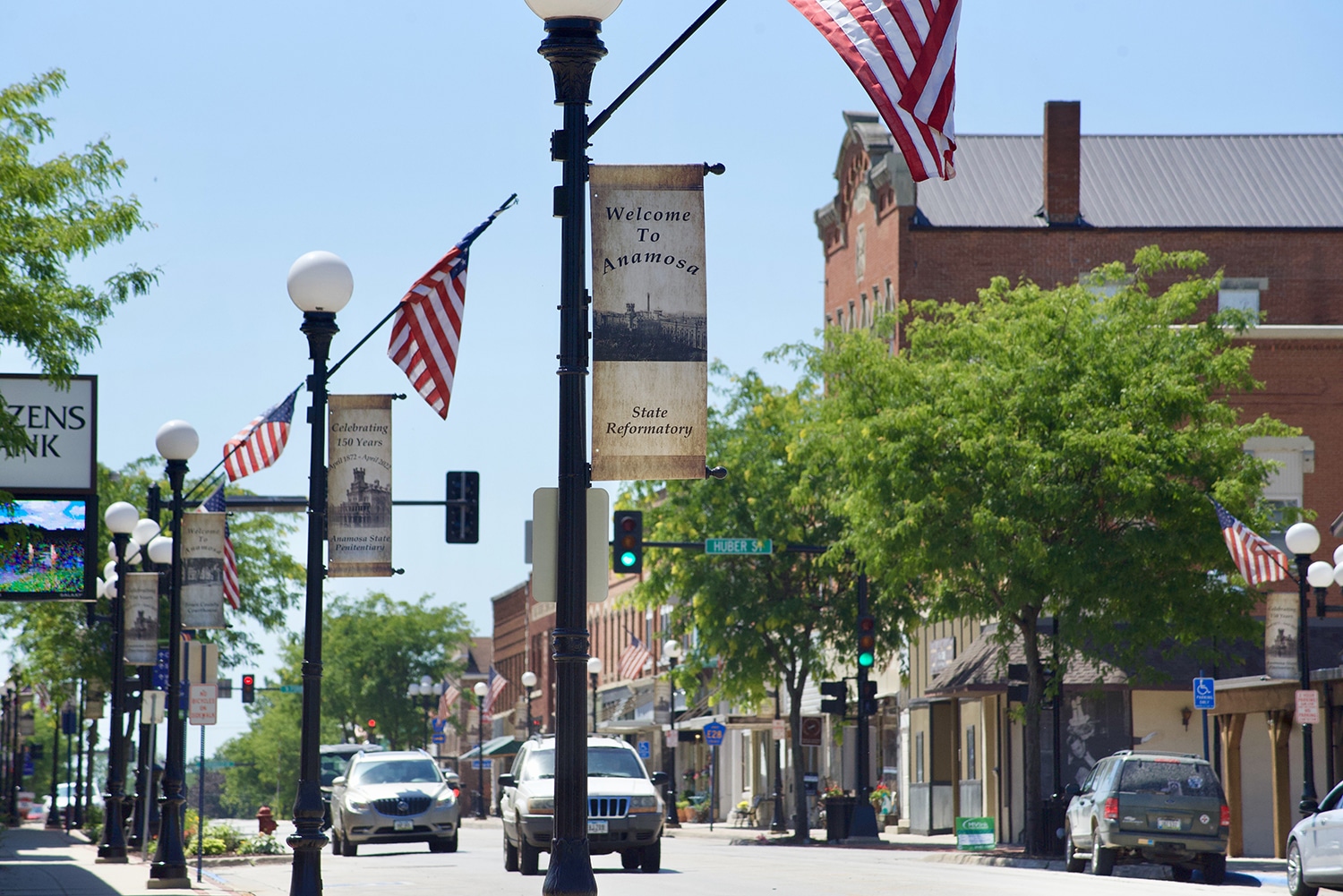
Photo: Cate Battles
For those who enjoy Americana and roadside attractions, Anamosa is a must-see stop in Iowa. Known as Iowa’s pumpkin capital, it’s also famous for being the birthplace of Grant Wood, one of the most iconic painters of Midwest Regionalism. Anamosa offers art lovers plenty of colorful places to soak up, including the Grant Wood Art Gallery and the 25-foot-tall replica of the American Gothic couple. A good portion of Wood’s work was created during the Great Depression, and many of his paintings portrayed Midwestern themes and rural American values. This can be seen in his most famous work, American Gothic, which is considered the most parodied painting in art history.
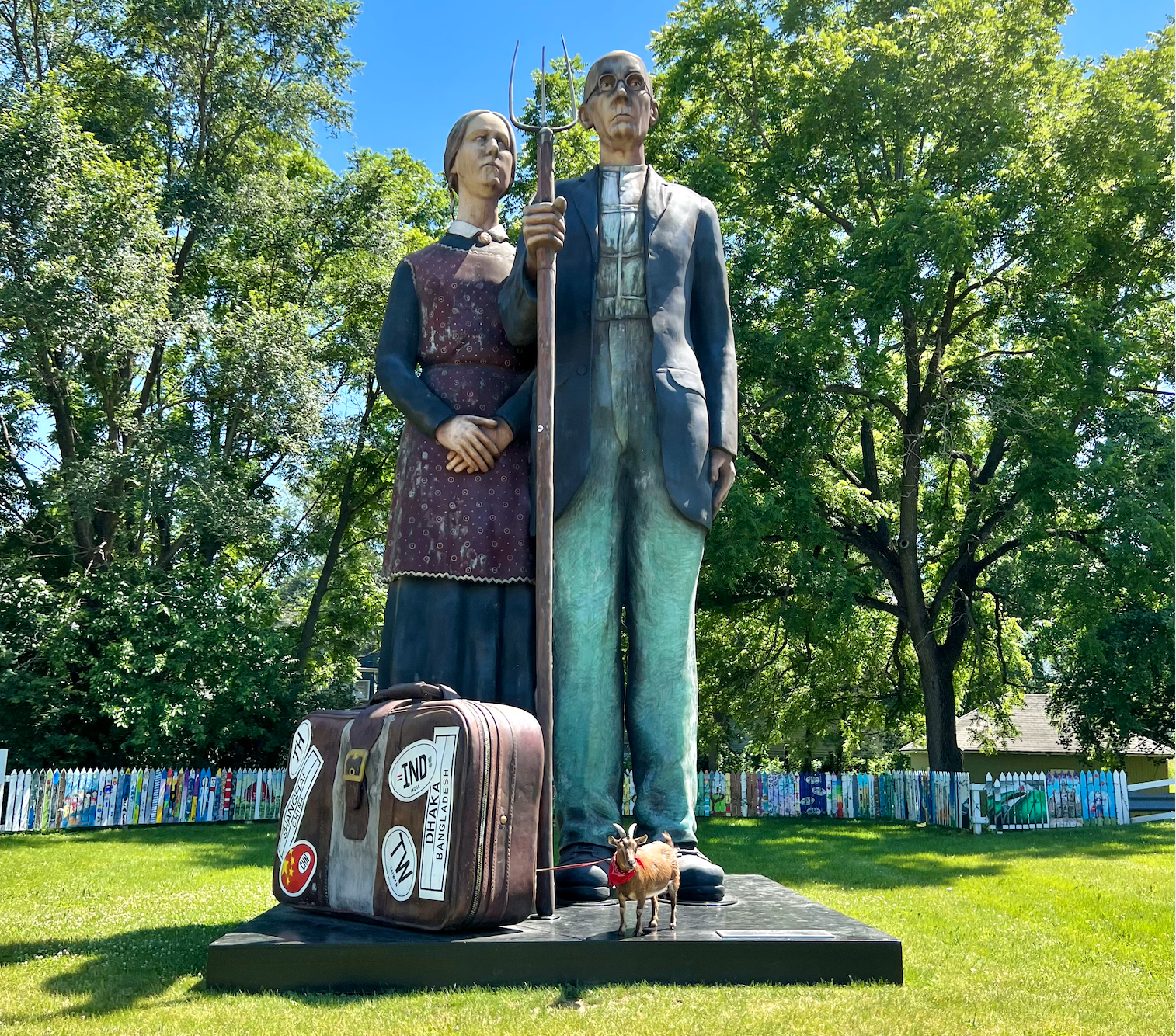
Photo: Cate Battles
If you’re a motorcycle lover, cruise on over to the National Motorcycle Museum, located right off Highway 151 in Anamosa. With more than 500 rare and vintage motorcycles on display, the museum offers interpretive exhibits of collected machines and historical objects from around the world, dating back to the motorcycle’s earliest years. One of its neat permanent exhibits is dedicated to competitions, including machines used for land speed racing, hill climbs, board track racing and drag racing. Some of the unique rides include a 1947 Indian Chief Rat Chopper owned by Steve McQueen and faithful replicas of Evel Knievel’s 1972 Harley Davidson “Alloy” XR750 Jump Bike and Easy Rider’s “Captain America” chopper. While perusing the museum’s eye candy, check out a 1928 Husqvarna Model 180, a 1907 Indian, a 1914 Yale Twin Racer, a 1902 Whitley of Coventry and a very eccentric 1970 Moto Guzzi by Felix Predko. Other highlights include a 1925 Shell Gas Station, a postal delivery bike from 1890, and an original Steco “aerohydroplane,” whose maiden voyage was documented at the Chicago International Aviation Meet in 1911.
Though it might not float your goat… the Anamosa State Penitentiary is an a-maize-ing stop for those who enjoy architecture or have a penchant for the macabre. The imposing castle-like fortress was built between 1872 and 1899 and to this day remains a maximum security prison and the largest of its kind in Iowa. Work began on the penitentiary in 1872 as prisoners built the limestone walls mined from nearby quarries, measuring 900 feet across the front, 800 feet along the sides and some areas reaching 24 feet high while encompassing roughly 13 acres. At the base, these impenetrable walls measure 8 feet thick and are buried as deep as 18 feet into the ground. In other words, there’s no chance of digging your escape. What’s most unusual about this prison is its ornate and spectacular Gothic Revival/Scottish Baronial Revival architecture.
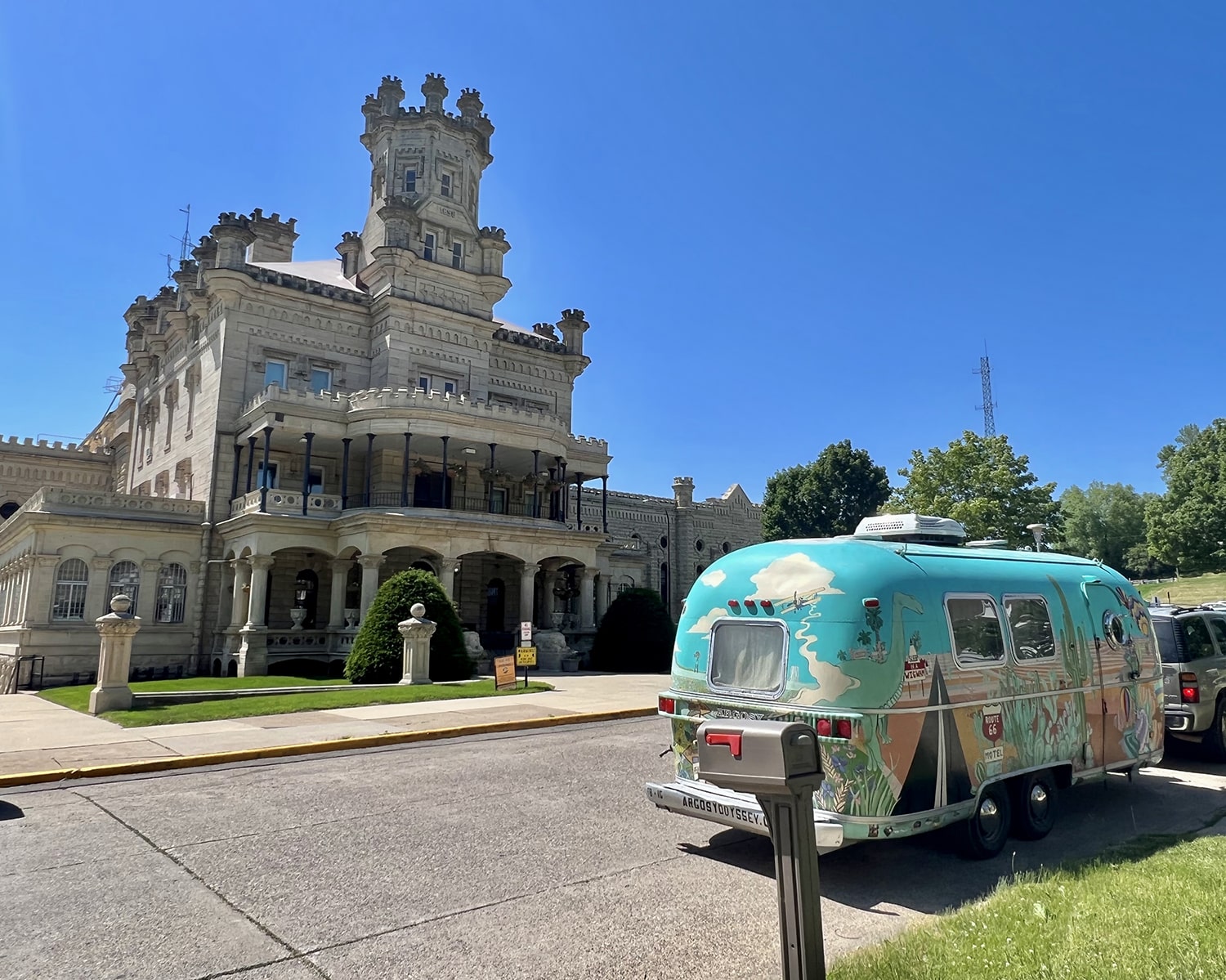
Photo: Cate Battles
However, behind its beautiful walls and metal barred windows lies a sordid history. The prison, which was built to hold roughly 900 men, has housed noted inmates like serial killers John Wayne Gacy and Robert Hansen. Like many state prisons of the early 20th century, this facility wasn’t equipped to handle patients needing psychiatric care or basic health needs. In 1958, it was found that most held within the mental health unit received little if not any psychiatric treatment or were even brought to trial, with many being forced to solitary confinement for months at a time. Many changes have been made since those earlier days, including rehabilitation programs in which prisoners can earn degrees and learn vocational skills, bringing hope for life beyond the limestone walls. Today, you can learn more about the Anamosa State Penitentiary by visiting their museum, located on the prison’s grounds. There, you can schedule a $3 tour of artifacts, pictures, and dioramas and get a glimpse into the life of a prisoner and guard during the turn of the 20th century.

Photo: Cate Battles
Ledges State Park
Situated 40 miles north of Des Moines, Ledges State Park has been an outdoor lovers’ dream since 1921. Unlike Maquoketa Caves, this area was affected by the last Ice Age and has a different geological makeup. Around 13,000 years ago, melting glaciers helped form the 100-foot-high ledges you see throughout the park today, eroding the sandstone left behind from ancient seas. Pea’s Creek, which is a branch of the nearby Des Moines River, cut a gorge through the cliffs, leaving behind a shallow, meandering creek perfect for wading on hot summer days. This same creek was hunting grounds for the ancestors of the Sauk, Sioux and Fox people who left behind ceramics, projectile points, and axes dating back 4,000 years.
The best way to explore the 1,200-acre park is by taking a hike along one of the many short trails that offer birds-eye views of the canyon, lush forest, and rocky outcroppings. Some of the popular viewpoints can be found at Inspiration Point, Crows Nest, and Table Rock. Although the trails are short, many of them are steep, so folks with mobility challenges should try the ADA-accessible Lost Lake Interpretive trail in the Southern portion of the park. The park is open year-round, but some of the best times are for the late spring wildflowers and stunning fall colors.
As you can see, there’s more than meets the Iowa here… Okay, enough.
Happy Trails and Tails!
For tips on how to find incredible RV destinations on the road, be sure to check out our comprehensive guide to finding new campgrounds

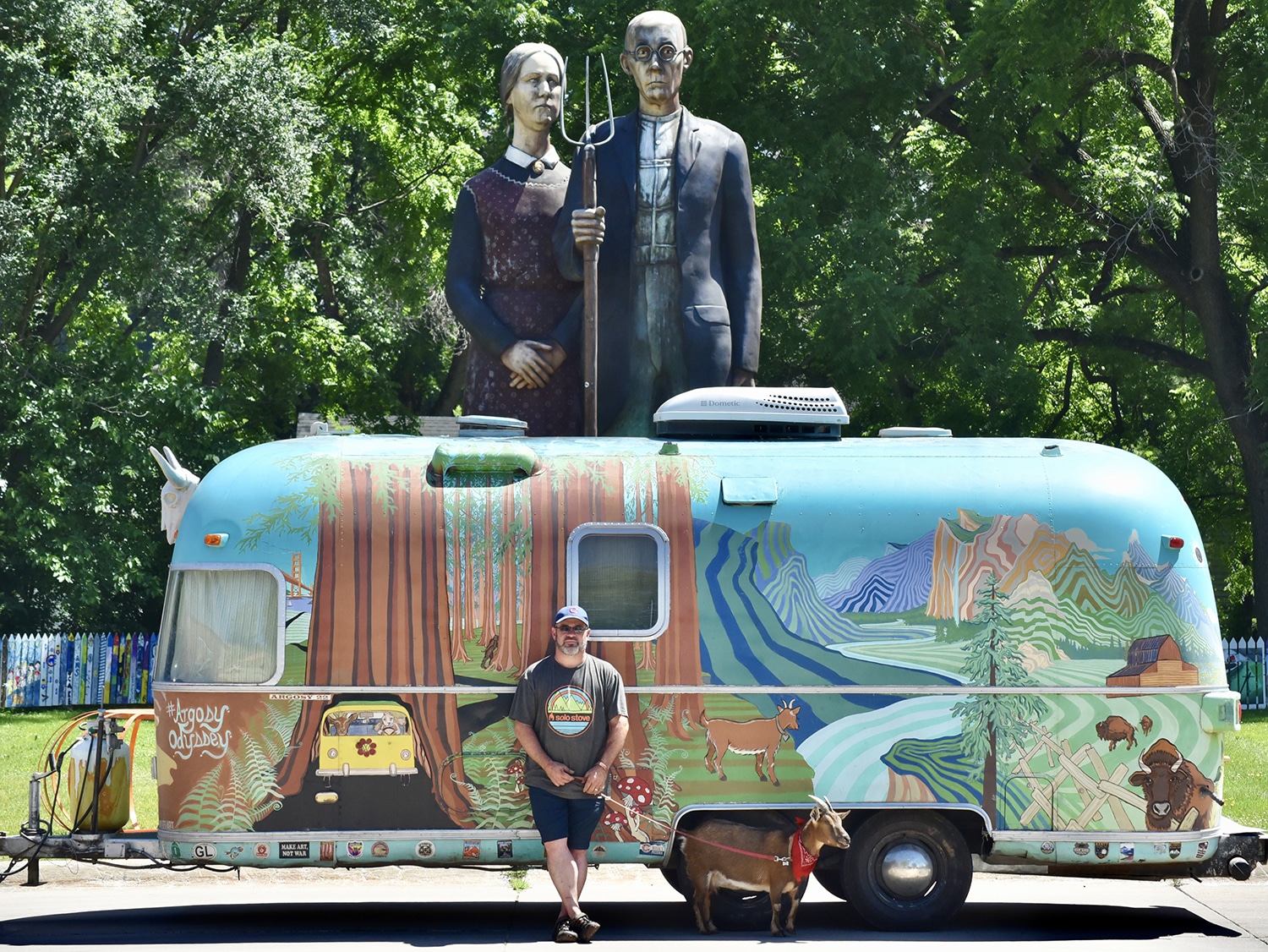

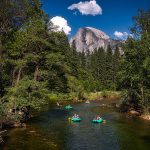




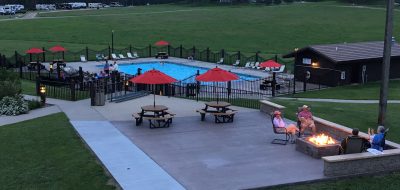

test
test